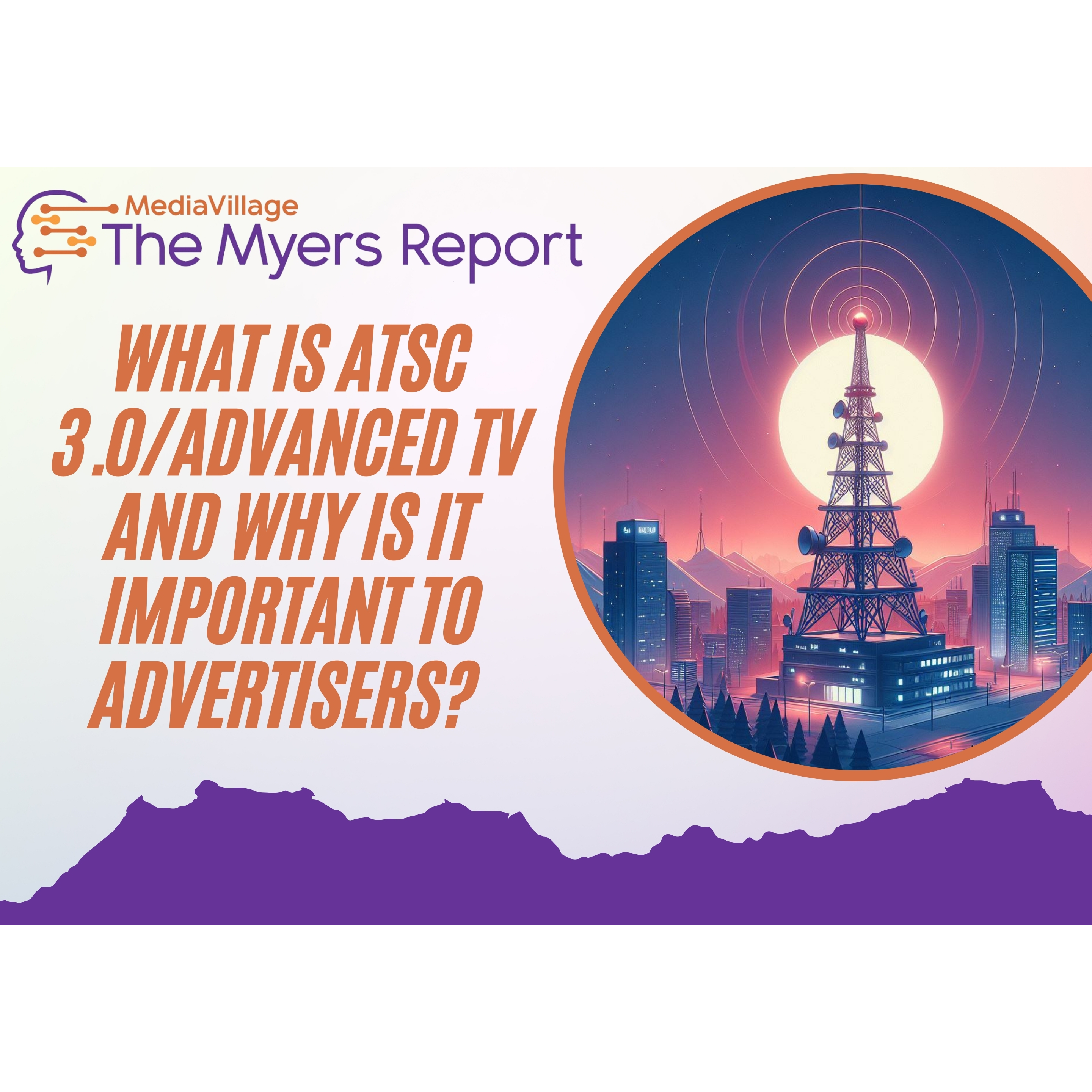What is ATSC 3.0/Advanced TV and Why is it Important to Advertisers?

According to The Myers Report, less than one percent of advertising professionals can explain ATSC 3.0/AdvancedTV. Yet, it's an important technological advance that will have a significant impact on media planning and buying. ATSC 3.0, also known as NextGen TV or Advanced Television Systems Committee 3.0, represents a significant leap forward in television broadcast standards. ATSC 3.0 merges over-the-air TV broadcasting with the internet, enhancing both the quality and functionality of TV services. This report explains the history, current status, key players, and business prospects of ATSC 3.0, with a special focus on its implications for advertisers and media buyers.
History of ATSC 3.0
ATSC 3.0 is the third major release by the Advanced Television Systems Committee, which was established to set voluntary standards for digital television in the United States. Unlike its predecessor, ATSC 1.0, which brought digital broadcasting in the late 1990s, ATSC 3.0 integrates traditional broadcast signals with broadband (internet) content. This integration facilitates a richer, more interactive viewer experience and paves the way for enhanced personalization, higher quality content, and more precise advertising.
The Role of ATSC 3.0
ATSC 3.0 transforms the broadcast industry by offering:
- Higher Quality Video and Audio: Supports 4K video and immersive audio formats.
- Improved Signal Reception: Better reception on mobile devices and TVs without needing a fixed aerial.
- Interactive and Targeted Content: Enables broadcasters to offer interactive features, such as on-demand video and more personalized content, including targeted advertising.
- Advanced Emergency Alerts: Enhanced capabilities for sending out public warnings that can be localized and more detailed.
Current Status
As of now, ATSC 3.0 has been rolled out in several major markets across the United States, with ongoing expansion plans. The transition to ATSC 3.0 is voluntary, and it exists alongside the current ATSC 1.0 standard. This means broadcasters can adopt the new standard at their pace, leading to a gradual transition phase.
Leaders in ATSC 3.0
Key players in the development and deployment of ATSC 3.0 include major technology providers, broadcast networks, and consortia. Companies like LG, Samsung, and Sony are leading the way in manufacturing ATSC 3.0-compatible televisions. Meanwhile, network giants such as Sinclair Broadcast Group, Nexstar Media Group, and NBCUniversal are actively involved in deploying ATSC 3.0 technology.
Business Prospects
ATSC 3.0 opens up new revenue streams and business models, particularly in advertising and subscription services. For advertisers, the transition offers a plethora of opportunities:
- Targeted Advertising: With ATSC 3.0, advertisers can deliver more personalized ad content to viewers based on demographics, viewing habits, or even geographic location.
- Increased Engagement: Interactive features enable viewers to engage directly with ads, such as obtaining more information or even purchasing a product directly through their TV.
- Improved Metrics: Enhanced tracking and data analytics capabilities allow for better measurement of ad effectiveness and viewer engagement.
Relevance for Advertisers and Media Buying
For media buyers, ATSC 3.0 provides a more granular control over who sees an advertisement, transforming how media buying is traditionally done. The integration of internet connectivity allows for real-time insights into viewer behavior, enabling dynamic ad insertion and better return on investment. Furthermore, the ability to address ads to specific segments of the audience greatly enhances the efficiency of campaigns, ensuring that the right messages reach the right viewers.
As ATSC 3.0 continues to roll out, the potential for broadcasters, advertisers, and technology providers is immense. While the adoption rate is growing slowly, the standard's capabilities make it an exciting frontier for the advertising industry. By staying ahead of the curve and embracing the opportunities presented by Advanced TV, advertisers and media professionals can leverage this technology to achieve unprecedented levels of audience engagement and advertising precision. The Myers Report encourages all stakeholders in the advertising and media industry to deepen their understanding of ATSC 3.0 to fully capitalize on its benefits in the digital age.


